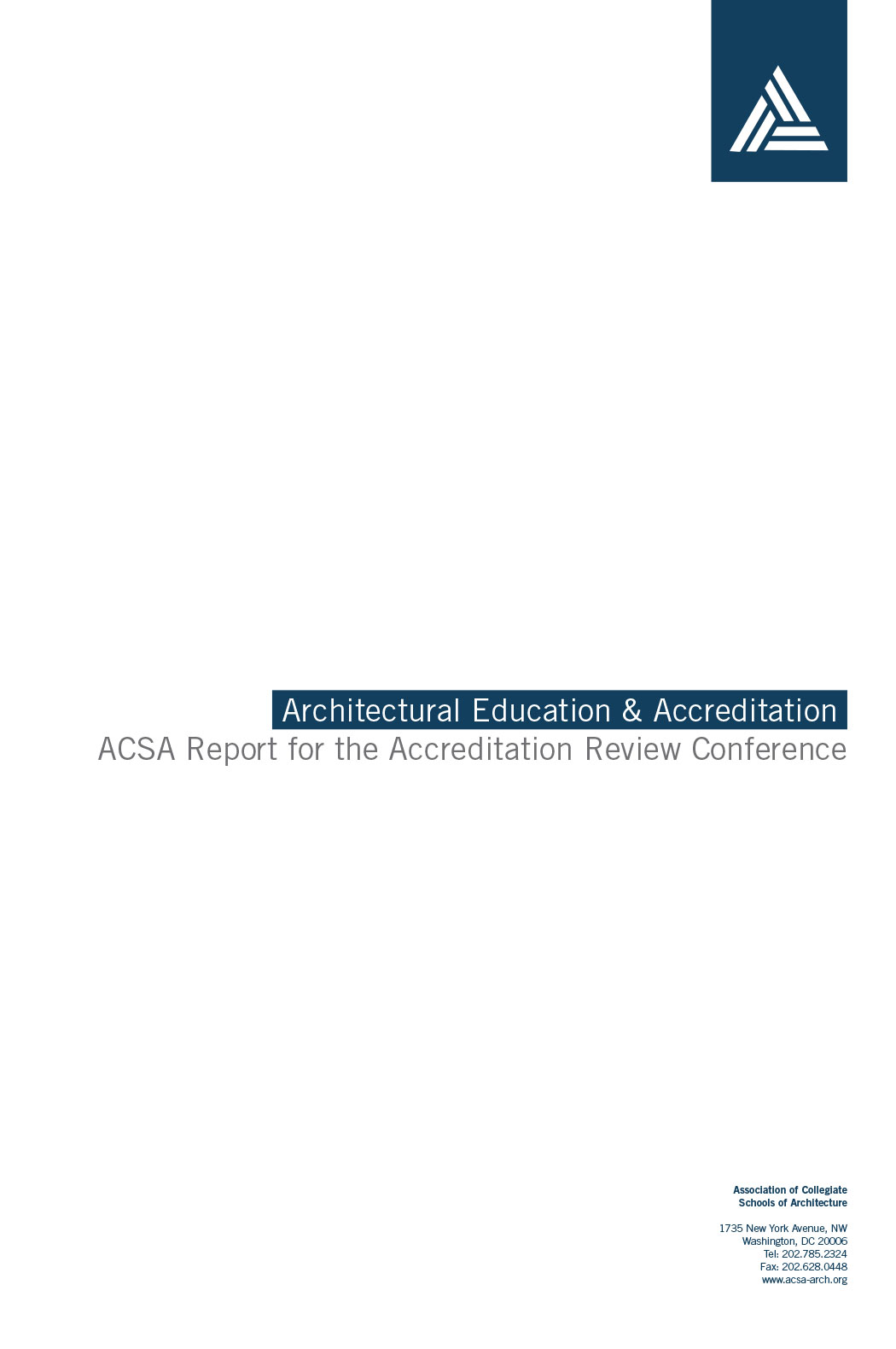This week is the NAAB Accreditation Review Conference, where 41 reps from the collateral organizations and a host of other interests discuss changes to the Conditions of Accreditation. Everyone comes in to this conference with a slightly different understanding of the purposes of architectural education. And from the pages and pages of research and reasoning, it seems all have good reason for discussion.
Our team is going in having reviewed, having parsed and debated a number of issues. NAAB has, too, releasing a framework for the conference that puts a number of important topics out for discussion.
We’ve shared before (here, too) what ACSA’s positions are for the conference. Accreditation should be leaner, allow programs more flexibility, and emphasize the skills that students can only learn in an architecture program.
Comprehensive design, collaboration, performance, and professional practice are the pervasive topics, but we are also thinking about the cost of education and time to licensure that students face (see p. 5 & 22 of NCARB by the Numbers). Conditions should be flexible for schools to experiment with curricula that give students more direct paths into practice.
Finally, we are going to emphasize that the paths to practice lead in many varied directions across schools in the United States and Canada. Assumptions about what students desire and what the professional market offers must be called out and examined in order to understand what forms of quality assurance best serve the profession and the public.
Follow what people are doing on Twitter: #ARC13.
Norman Millar
 |

 Study Architecture
Study Architecture  ProPEL
ProPEL 